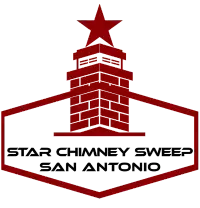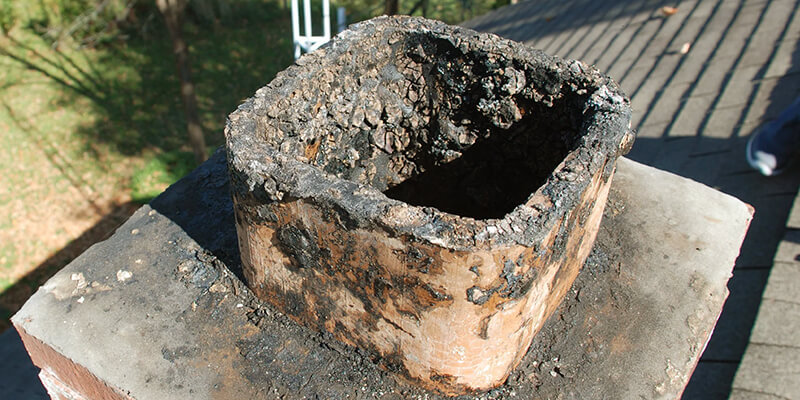Fireplaces bring warmth and comfort to many homes in San Antonio, but they also come with a hidden danger: creosote buildup. Creosote is a highly flammable substance that forms inside chimneys when wood is burned. It starts as a light, flaky residue but can harden into a thick, tar-like coating if left uncleaned. Over time, creosote becomes a serious fire hazard, and if ignored, it can lead to chimney fires, structural damage, or even carbon monoxide leaks into the home.
The good news is that there are several warning signs to look for that indicate a dangerous level of creosote in your chimney. By staying alert to these signs and scheduling routine inspections, homeowners can protect their families and property.
While many homeowners understand the need for fireplace maintenance, few realize how quickly creosote can build up—especially during colder months when fireplaces are used more often.
hat’s why it’s important to work with a trusted chimney sweep San Antonio homeowners rely on for regular cleanings and safety checks.
Let’s break down the most common signs of creosote buildup so you know when to take action.
1. Strong, Smoky Odors From the Fireplace
One of the first signs of creosote is a strong, unpleasant smell, especially when the fireplace is not in use. If your home smells like burnt wood or tar even when the fireplace is off, this could indicate a creosote issue. The odor gets worse during humid weather or after rain, as moisture can activate the smell in the creosote deposits.
2. Reduced Draft or Poor Airflow
If smoke doesn’t rise up the chimney efficiently or seems to linger in the room, creosote might be blocking the flue. Poor airflow can also mean your damper isn’t sealing properly or there’s too much buildup for smoke to pass through. Either way, it’s a signal that your chimney needs attention.
To avoid further damage or fire risk, it’s a good idea to contact Star Chimney Sweep San Antonio for an inspection if you notice frequent smoky backups or airflow issues.
3. Black or Dark Brown Streaks Inside the Chimney
Creosote appears in different forms—powdery soot, crunchy flakes, or hard, shiny tar. If you shine a flashlight up your flue and see dark, crusty streaks or shiny spots, you’re likely looking at second- or third-stage creosote. These forms are the most dangerous and most difficult to remove, often requiring professional tools and experience.
4. Excessive Soot Buildup in the Firebox
Soot and creosote often go hand in hand. If you notice more soot than usual collecting in the firebox or around the damper, that’s a sign that combustion isn’t efficient—and creosote is likely forming faster than normal. A thin, grey layer may seem harmless, but it can build up quickly into a serious issue.
5. Flames Seem Smaller or Weaker
When airflow is restricted and creosote builds up, it affects the strength of your fire. If your fires aren’t burning as hot or seem weak, the issue might not be the wood—it could be airflow restriction caused by creosote coating the flue walls. Reduced airflow means less oxygen for combustion, and that limits fire performance.
6. Visible Debris or Chimney Blockages
Creosote flakes may fall into the firebox, especially when it’s dry or flaky. If you find unusual debris in your fireplace that wasn’t there before, take it as a serious warning. It means pieces of creosote are detaching—likely due to extreme buildup—and your chimney needs immediate cleaning.
7. Sounds of Scratching or Animal Activity
Although not directly related to creosote, birds or small animals nesting in the flue can worsen the problem. Their presence slows airflow, allowing creosote to collect faster. In some cases, a dead animal or nesting materials can ignite due to nearby creosote, causing a fire hazard.
8. Chimney Fires or Signs of One
Sometimes chimney fires start and extinguish without the homeowner even knowing. If you hear loud popping or cracking sounds from the fireplace, or notice black smoke or flames coming from the top of the chimney, you may have had a chimney fire. After such an event, creosote buildup is almost always the root cause—and immediate inspection is essential.
The Dangers of Ignoring Creosote
Creosote is extremely flammable, and chimney fires caused by buildup can reach over 2000°F. These fires can destroy flue liners, spread to the roof or attic, and even result in total loss of the home. Even if a fire doesn’t occur, restricted airflow from creosote increases the risk of carbon monoxide leaking into your home—an invisible and potentially deadly gas.
This is why the National Fire Protection Association recommends that chimneys be inspected at least once a year and cleaned as needed. In colder climates or during high-use months, inspections may be needed more frequently.
Final Thoughts
Creosote buildup is a serious but preventable problem. Knowing the warning signs—like strong odors, poor draft, visible buildup, or falling debris—can help you act early and avoid costly damage or safety risks. Routine maintenance is not just good practice—it’s a must for anyone using a fireplace regularly.
For homeowners in San Antonio, Star Chimney Sweep San Antonio offers expert inspections, thorough cleanings, and friendly service backed by experience. Whether you’re noticing signs of creosote or just due for an annual check-up, they’re the local pros you can count on to keep your home safe and your chimney in top shape.


